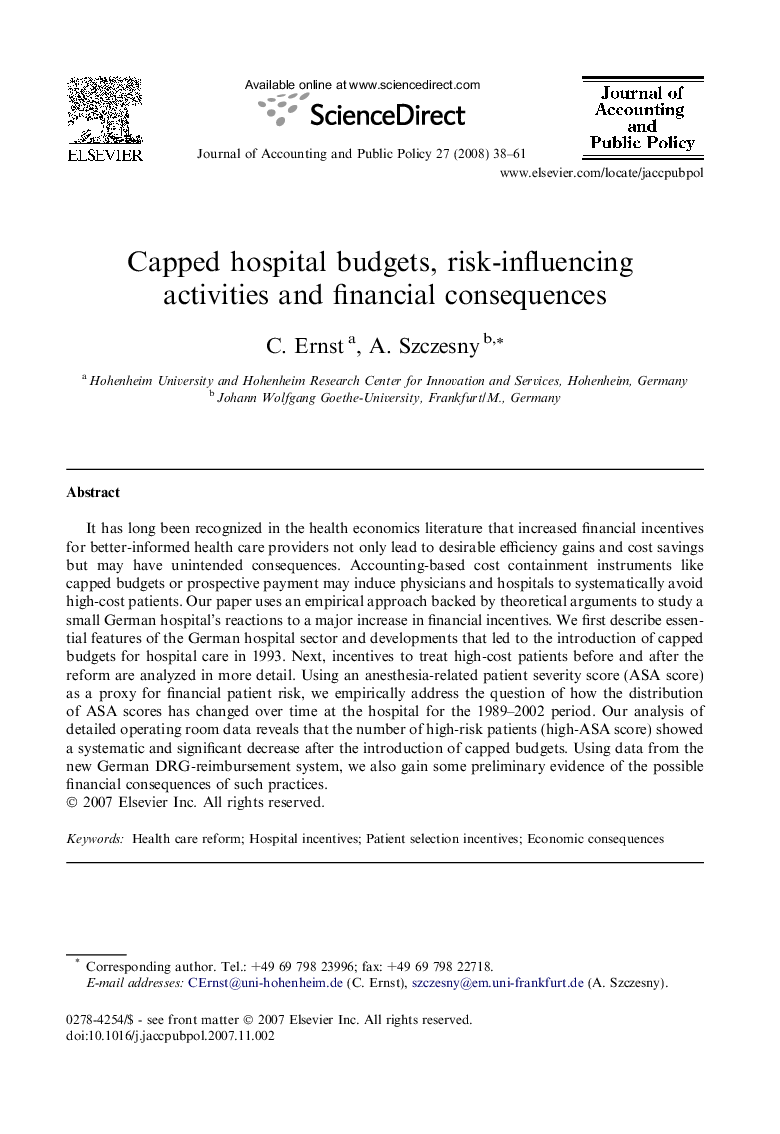| کد مقاله | کد نشریه | سال انتشار | مقاله انگلیسی | نسخه تمام متن |
|---|---|---|---|---|
| 1006160 | 938126 | 2008 | 24 صفحه PDF | دانلود رایگان |

It has long been recognized in the health economics literature that increased financial incentives for better-informed health care providers not only lead to desirable efficiency gains and cost savings but may have unintended consequences. Accounting-based cost containment instruments like capped budgets or prospective payment may induce physicians and hospitals to systematically avoid high-cost patients. Our paper uses an empirical approach backed by theoretical arguments to study a small German hospital’s reactions to a major increase in financial incentives. We first describe essential features of the German hospital sector and developments that led to the introduction of capped budgets for hospital care in 1993. Next, incentives to treat high-cost patients before and after the reform are analyzed in more detail. Using an anesthesia-related patient severity score (ASA score) as a proxy for financial patient risk, we empirically address the question of how the distribution of ASA scores has changed over time at the hospital for the 1989–2002 period. Our analysis of detailed operating room data reveals that the number of high-risk patients (high-ASA score) showed a systematic and significant decrease after the introduction of capped budgets. Using data from the new German DRG-reimbursement system, we also gain some preliminary evidence of the possible financial consequences of such practices.
Journal: Journal of Accounting and Public Policy - Volume 27, Issue 1, January–February 2008, Pages 38–61